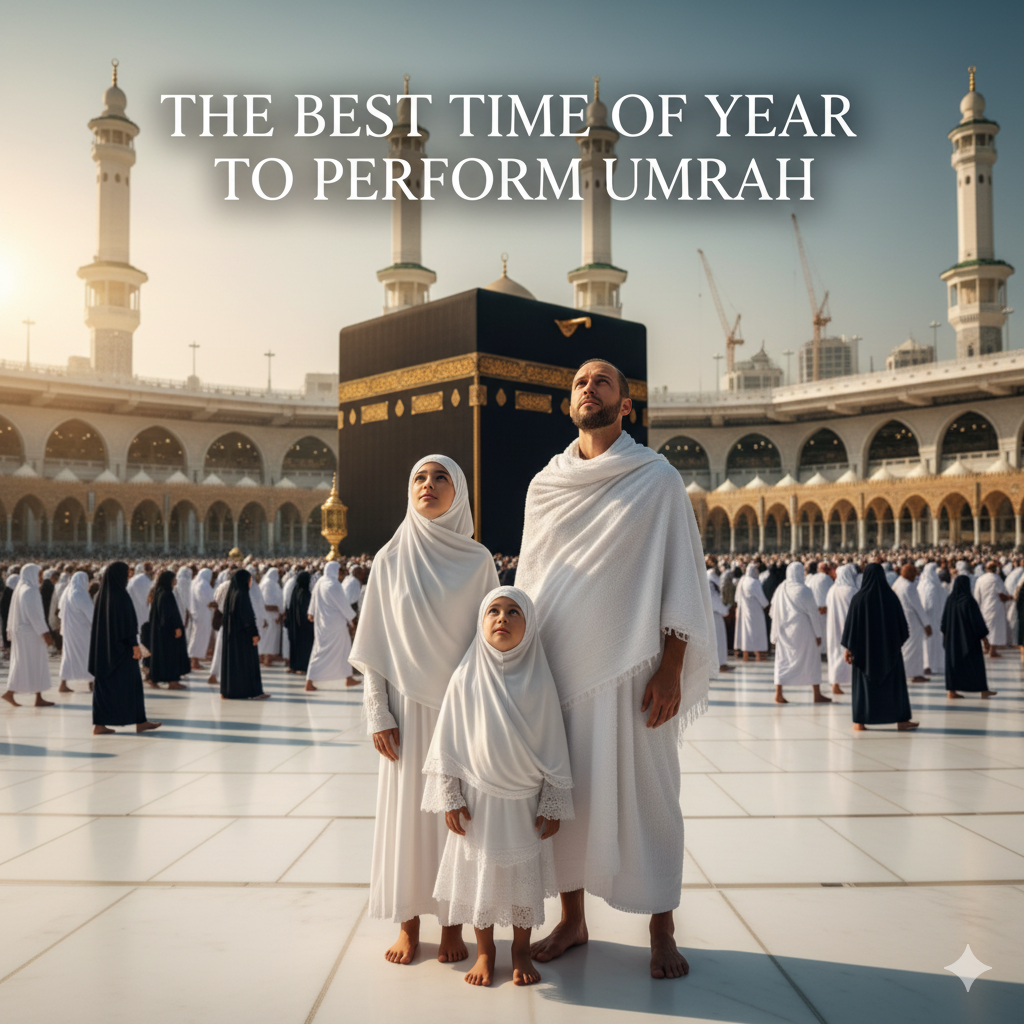
The decision of when to Perform Umrah is one of the most significant choices a pilgrim faces. While the Umrah journey can be undertaken at any point in the year, selecting the Best Time of Year to perform Umrah can profoundly impact the comfort, cost, and overall spiritual experience. This detailed article explores the various factors—climatic, spiritual, and logistical—to help you determine the Best Time for your sacred visit.
The Umrah: A Year-Round Pilgrimage
Umrah is a voluntary, non-obligatory pilgrimage to Makkah, Saudi Arabia, that can be performed throughout the year, unlike Hajj, which has specific dates. The spiritual reward for Performing Umrah is immense, making it a dream for millions of Muslims globally. Choosing the Best Time is less about religious mandate and more about maximizing comfort and devotion during this special Umrah journey.
The Spiritual Significance of Time
Although any Time of Year is suitable to perform Umrah, some periods hold heightened spiritual merit, which is a major factor in determining the Best Time.
Ramadan: Performing Umrah during the holy month of Ramadan is considered exceptionally meritorious. The Prophet Muhammad (peace be upon him) stated that Umrah in Ramadan is equivalent to performing Hajj with him.
Sacred Months (Dhul Qa'dah, Dhul Hijjah, Muharram, Rajab): While Hajj occurs in Dhul Hijjah, the other sacred months are also seen as propitious times to perform Umrah.
Understanding these spiritual incentives is the first step in planning your Umrah journey and helps highlight why certain months are considered the Best Time.
Seasonal Analysis: Climate and Comfort during Umrah
The climate in Saudi Arabia is a critical factor when considering the Best Time of Year to perform Umrah. The region experiences extreme heat during the summer months, which can make the physical rituals of Umrah highly challenging.
The Ideal Time: Winter (November to February)
Without a doubt, the Best Time of Year to perform Umrah from a climatic perspective is during the relatively cool winter months. This period makes the long walks and time spent outdoors in the vicinity of the Kaaba far more manageable.
| Month | Average Temperature Range (°C) | Crowd Level | Suitability for Umrah |
|---|---|---|---|
| November | $20^{\circ}C - 30^{\circ}C$ | Medium | Excellent |
| December | $18^{\circ}C - 28^{\circ}C$ | High (Holidays) | Excellent |
| January | $17^{\circ}C - 27^{\circ}C$ | Medium | Optimal |
| February | $19^{\circ}C - 29^{\circ}C$ | Medium | Optimal |
Reasons this is the Best Time to Perform Umrah:
Physical Ease: Lower temperatures reduce the risk of heatstroke and exhaustion, allowing pilgrims to fully focus on their devotion during the Umrah journey.
Outdoor Activities: Sightseeing (Ziyarat) and travel between Makkah and Madinah are much more comfortable.
Overall Comfort: The temperate climate makes all aspects of the Umrah experience, from Tawaf (circumambulation) to walking to and from the hotels, significantly more pleasant.
The desire for a physically comfortable Umrah often leads pilgrims to target this Time of Year to Perform Umrah.
The Best Time to Perform Umrah: Considering Crowds and Cost
The Best Time isn't just about weather; it’s also a careful balance of avoiding peak crowds and managing the financial aspect of the Umrah journey.
Peak Season and High Costs
If you choose to Perform Umrah during periods of high demand, be prepared for increased costs and significantly larger crowds. The "peak season" generally includes the winter months (due to weather), school holidays (Easter, Christmas), and, most notably, Ramadan.
Ramadan: While spiritually the Best Time to Perform Umrah, it is logistically the most demanding. Hotel prices soar, flights are expensive, and the courtyards of the Haramain are densely packed. This is a sacrifice many are willing to make for the reward of the Umrah in this month.
School Holidays (UK/Europe): Many families schedule their Umrah journey around these breaks, driving up demand and making it less affordable to Perform Umrah for those seeking a budget option.
The Value Period: The Best Time for Budget Pilgrims
For the budget-conscious pilgrim, the Best Time of Year to Perform Umrah generally falls immediately after the Hajj season and into the early autumn, or the transition periods between major holidays.
The Shoulder/Off-Peak Months:
Late August to Early October: After the massive influx of Hajj pilgrims, the crowds thin out. Although the heat can still be significant in September, early October offers a good balance. Accommodation and flight prices see a considerable drop, making it more affordable to perform Umrah.
Early March to May (Excluding Ramadan): This period is warm but usually pre-dates the most intense summer heat. While crowds start to build up as Ramadan approaches, booking in the early part of this window can secure better prices for your Umrah journey.
The financial benefit of selecting this Time of Year to Perform Umrah is substantial, which for many makes it the true Best Time. Performing Umrah should be financially feasible, and the shoulder season helps achieve this goal.
Specific Considerations for Your Umrah Journey
To truly determine the Best Time of Year to perform Umrah, you must weigh your personal priorities. The ideal Time of Year varies based on whether your focus is comfort, spirituality, or cost.
Prioritizing Your Umrah Experience: A Checklist
Use this checklist to identify the Best Time that aligns with your specific needs for the Umrah journey:
If your priority is the lowest temperature, Choose January or February. This is climatically the Best Time to Perform Umrah.
If your priority is the highest spiritual reward: Choose Ramadan. Be prepared for extreme crowding and costs, but the spiritual benefits outweigh the logistical challenges of this Time of Year.
If your priority is the lowest cost: Choose September or October (post-Hajj). The heat is a drawback, but the savings on your Umrah journey are significant.
If your priority is fewer crowds: Choose the weeks immediately following Hajj. The reduced density allows for a more contemplative and focused Umrah.
The sheer volume of people seeking to Perform Umrah necessitates this careful planning. Selecting the correct Time of Year is essential for a stress-free and ultimately rewarding experience.
Logistical Factors and Duration
The duration of your stay and the complexity of your travel arrangements can also influence the Best Time to book your Umrah. Longer stays are often more feasible during the off-peak season when costs are lower.
Visa Processing: While generally smooth, certain high-demand periods (like the lead-up to Ramadan) can strain the system. Planning for your Umrah journey well in advance is always the Best Time regardless of the month you choose to Perform Umrah.
Hotel Availability: During peak periods, hotels near the Haram are often fully booked. Booking six to twelve months in advance is the prudent action if you insist on a specific Time of Year to Perform Umrah.
In essence, every decision related to your Umrah must be made with foresight, turning a challenging pilgrimage into a profound spiritual awakening.
Conclusion: Finding Your Personal Best Time to Perform Umrah
There is no single, universally agreed-upon Best Time of Year to Perform Umrah. The perfect Time of Year depends entirely on the pilgrim's personal circumstances, budget, and priorities.
For Maximum Comfort, the winter months are unparalleled.
For Maximum Reward, Ramadan remains the ultimate choice.
For Maximum Value, the shoulder seasons offer the most attractive prices for your Umrah journey.
Regardless of when you decide to perform Umrah, remember that sincerity and devotion are the most important elements. Careful planning, informed by the climatic and logistical details provided here, will ensure your Umrah journey is as spiritually fulfilling as possible. Choosing the Best Time is simply about removing physical obstacles so you can focus entirely on the sacred purpose of your Umrah.
More Travel News
-
 16-Mar-2022Umrah Packages Ramazan Guide 2022
16-Mar-2022Umrah Packages Ramazan Guide 2022 -
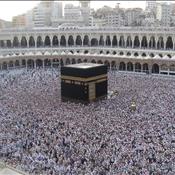 26-Feb-2023Special 25% Hajj Quota for Pilgrims launched for those depositing Hajj Fee in dollars
26-Feb-2023Special 25% Hajj Quota for Pilgrims launched for those depositing Hajj Fee in dollars -
 25-Apr-2020How To Claim Compensation To Airline For A Cancelled Flight
25-Apr-2020How To Claim Compensation To Airline For A Cancelled Flight -
 13-Jun-2020Top 5 Benefits of Traveling, Why You Should Travel More in 2020
13-Jun-2020Top 5 Benefits of Traveling, Why You Should Travel More in 2020 -
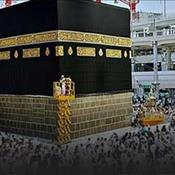 28-Oct-2019Umrah Dua
28-Oct-2019Umrah Dua -
 06-Jun-2020UNWTO Says the Travelling Would Slowly Start Throughout the World
06-Jun-2020UNWTO Says the Travelling Would Slowly Start Throughout the World -
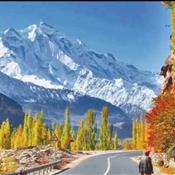 06-Jul-2021What Are the Hottest Travel Deals in Pakistan for the Summer Season
06-Jul-2021What Are the Hottest Travel Deals in Pakistan for the Summer Season -
 22-May-2025New Zealand Investor Visa Gets a Makeover: Ready for a Second Home?
22-May-2025New Zealand Investor Visa Gets a Makeover: Ready for a Second Home? -
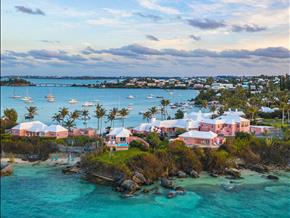 10-Jul-2024Top 10 countries with most beautiful beaches in the whole world
10-Jul-2024Top 10 countries with most beautiful beaches in the whole world -
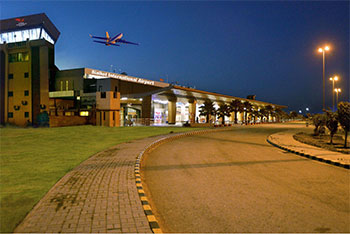 31-Aug-2025Criminals Exploit Umrah Packages: Authorities Tighten Security for Pilgrims
31-Aug-2025Criminals Exploit Umrah Packages: Authorities Tighten Security for Pilgrims -
 15-Aug-2025Visa-Free Entry to America in 2025: A Comprehensive Guide to the Visa Waiver Program (VWP)
15-Aug-2025Visa-Free Entry to America in 2025: A Comprehensive Guide to the Visa Waiver Program (VWP) -
 07-Jan-2020Top 5 Religious Tourist Places in Pakistan
07-Jan-2020Top 5 Religious Tourist Places in Pakistan
